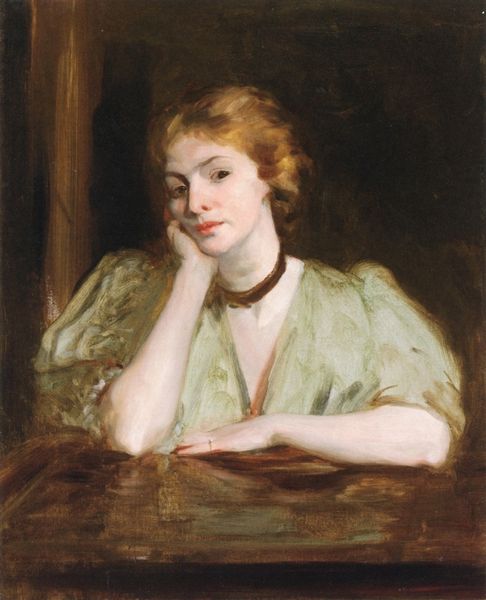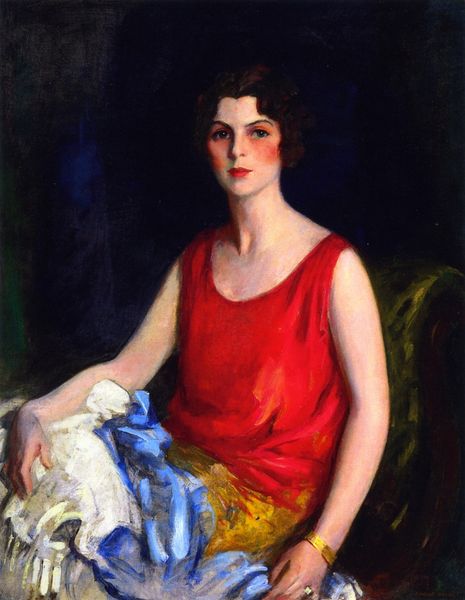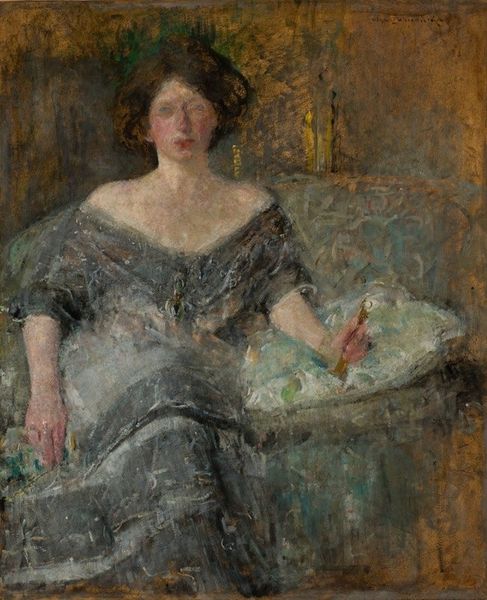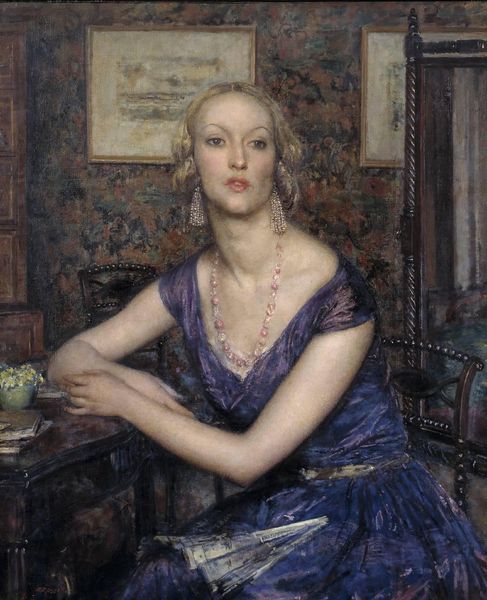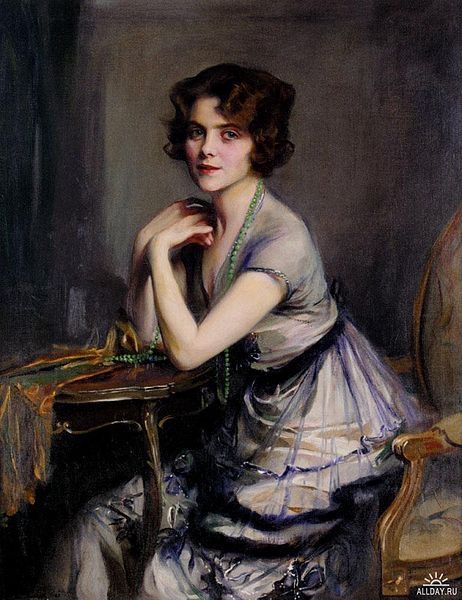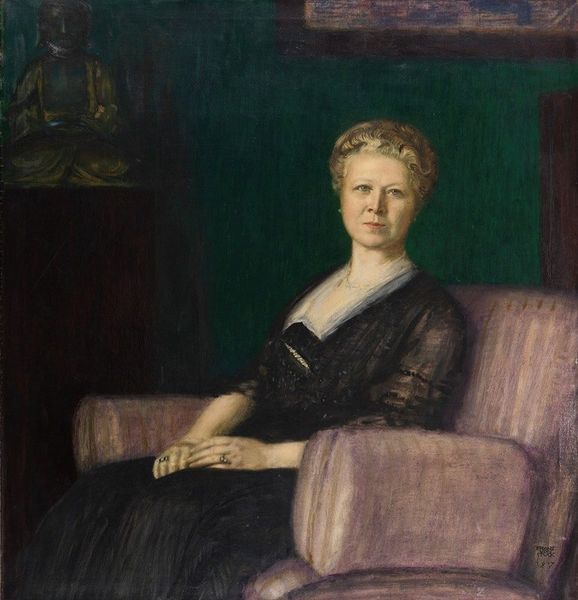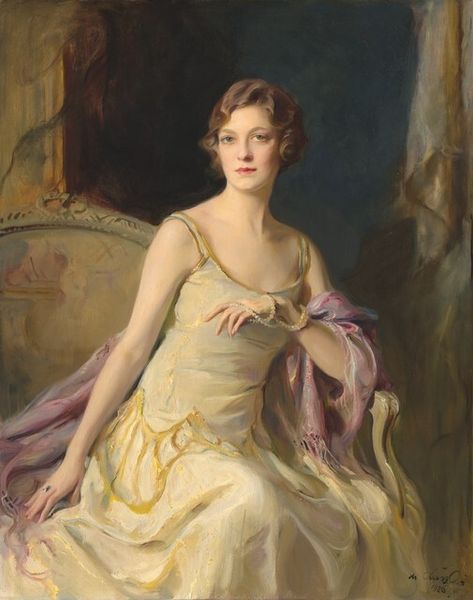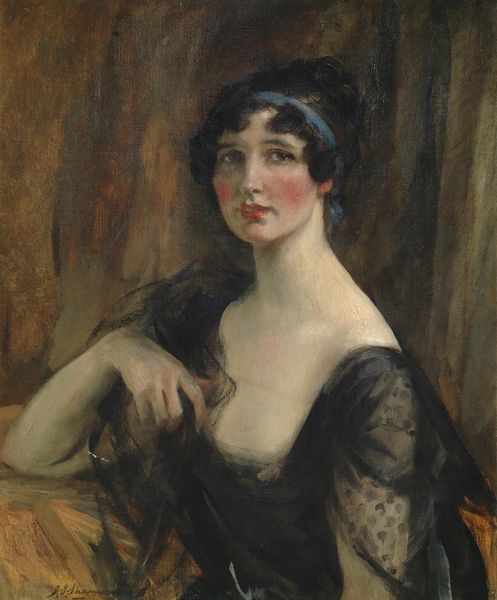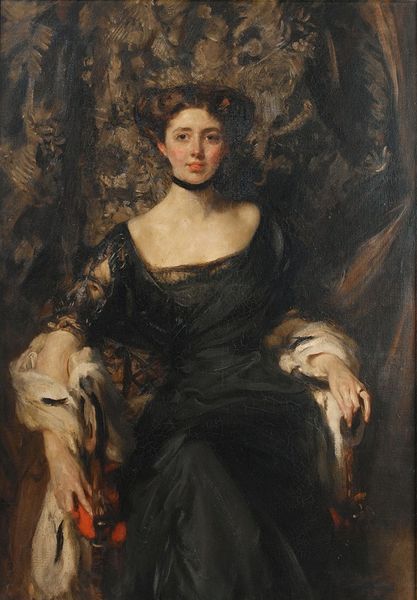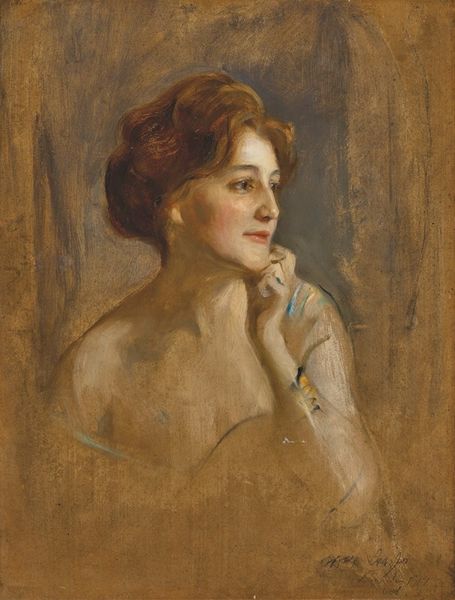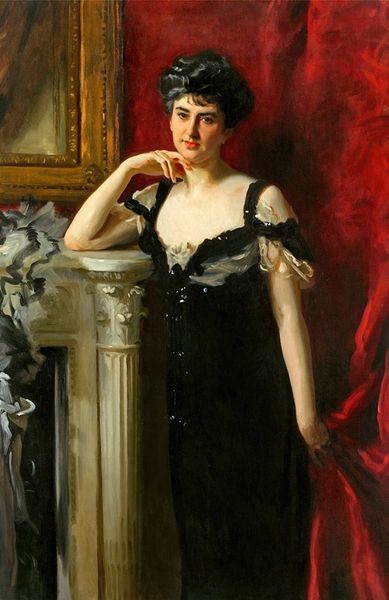
#
figurative
#
portrait reference
#
portrait head and shoulder
#
underpainting
#
animal drawing portrait
#
portrait drawing
#
facial portrait
#
portrait art
#
fine art portrait
#
celebrity portrait
#
digital portrait
Copyright: Public Domain: Artvee
Curator: This portrait, called "Bildnis einer Dame", or Portrait of a Lady, was painted between 1916 and 1918 by Franz von Stuck. Editor: There's a certain quiet intensity to it. Her direct gaze is disarming, yet her posture suggests restraint. The color palette is subdued, except for the striking red chair—it creates such a vibrant focal point. Curator: Red, of course, has a long symbolic history. Think of passion, danger, or even status in art history. Given that Stuck was painting during the tumultuous years of the First World War, might the portrait communicate themes of suppressed desires and anxieties in Weimar Germany? It makes me wonder what the sitter's social context was during such a historical shift. Editor: Indeed, it could easily tap into that visual language. But the portrait also suggests timeless themes. Take note of the interlaced hands which represent so many emotional contracts - commitment, tension or love; It's all conveyed within that small detail! It brings her character, and her potential narrative, into the fore. Curator: Absolutely. We can see the weight those details might bring by understanding what social scripts were open to women in Germany, at the time; and also by the limited roles ascribed to her by gender and society. The painting also strikes me, technically. The soft brushstrokes soften the subject, idealizing her and lending her that air of beauty and detachment, even if she returns our gaze directly. Editor: And isn't that interplay, that negotiation between interiority and social display, the power of portraits like these? To echo historical narratives in one place while hinting at the deep well of emotions. The fact that so much is left unanswered is also why the piece has enduring strength. Curator: Precisely. Bringing those multiple levels of context and interpretation together opens the way to better understand portraits like this one in Von Stuck's oeuvre, to begin with; and maybe to understanding even more art across eras. Editor: A fascinating point. Thanks for revealing all this new language that brings it into view.
Comments
No comments
Be the first to comment and join the conversation on the ultimate creative platform.
